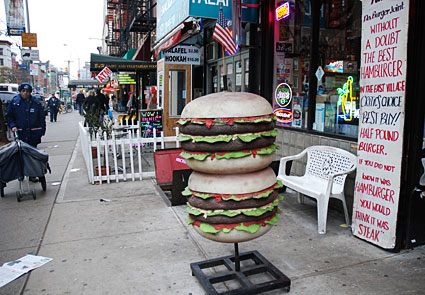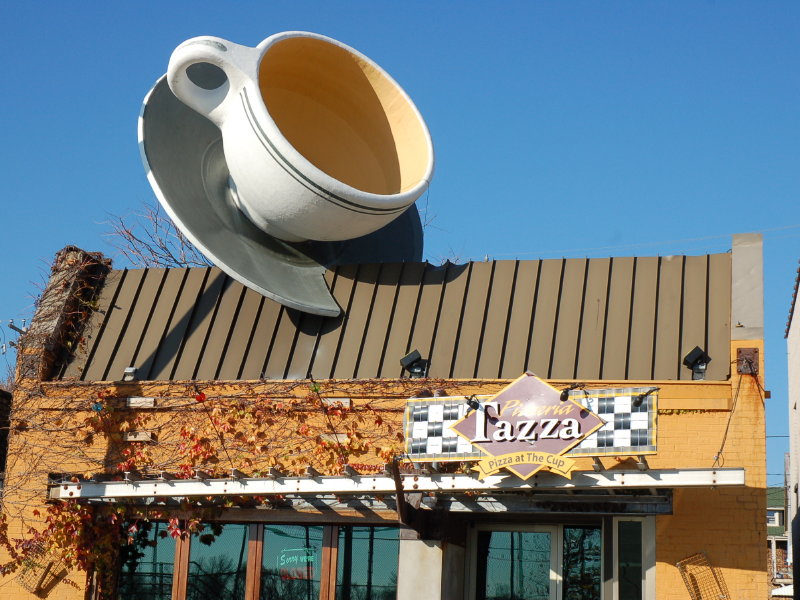Last night I went before town council to ask that they defer voting on a new sign ordinance, because I would like to see language that not only more precisely defines the difference between signage and art, but take a more forgiving view of art that is created to promote business, so that it does not have to conform to the restrictions of a sign ordinance.
From town code, here are two interesting definitions to consider:
|
These definitions might appear to be clear on the surface, but what if I want to create a mural that visually promotes a service provided by a business, and is intended to promote that business, yet I do it using neither language nor the logo of the business?
Specifically, (assuming obtaining copyright permission) what if I wanted to put this image or something similar on the side of a soda shop?
 |
| Normal Rockwell's The Soda Fountain |
What about this one?
 |
| From http://suelynncotton.com/Food%20&%20Wine.htm |
At what point does a mural become a sign?
I don't think there is a definitive answer to this question. I believe the answer goes to the goals of a community, and how they would like to present their community to the rest of the world. My own opinion is that a more forgiving definition of mural (or is it artistic definition of sign?) would allow not only for a great deal of creativity, but much better odds that a business owner would be willing to pay for a mural on the side of their building or some type of interesting sculptural display.
Now lets apply the same logic to sculptural art. I'll give a specific example from a project one which I was one of the designers. Virginia artist Tom Wright was commissioned to do this piece, and he and I designed it together.
The fountain is a rather broad interpretation of the church's logo:
I've been told that essentially only the circle or rectangle within a mural that contains the name of the business and logo is considered a sign. So for instance, in the image below, only the red circle with the word Coca-Cola would be a sign, and would be restricted by size according to the sign ordinance:
 |
| From http://www.waymarking.com/gallery/image.aspx?f=1&guid=3ad7576b-30ba-48ef-b21f-fe783c4da964 |
So lets say that we apply the same logic to three dimensional art. First off, is this merely a sculpture, or is it a sign?
 |
| From http://www.urban75.org/photos/newyork/manhattan-street-photos-01.html |
What about this?:
 |
| From http://onmilwaukee.com/dining/articles/tazzapizzeriaclosed.html |
What if that coffee cup has a logo on it? Would only the logo part be a sign?
This isn't just a local conversation. These are questions every town should be asking. What do you want out of your sign ordinance? What do you want in terms of art?


I think part of the essence of urbanity is a chaos of clutter. A uniformity works well in certain areas if that's what they are trying to achieve, but in most city areas I say let the creativity fly.
ReplyDeleteRecently I was in San Juan Capistrano with my daughters. They wanted to eat at Southern California's most popular burger franchise "In-and-Out". The GPS had us passing the address that we had for them several times until we discovered the place was no longer in business, something unheard of for this franchise. I couldn't help but wonder if the city's signage laws had made the location so invisible that they weren't getting the tourist business.
Sometimes the attempt to remain "tasteful" or whatever it is they are trying to achieve merely achieves a bland city equivalent of plain oatmeal with no accompanying fixins.
Lee
Wrote By Rote
I like that Lee. "Plain oatmeal." The irony of the situation is that we are not only talking about a new "arts and culture district", but also a historic district. Historically, sides of buildings in small towns were painted to say "Hardware", "Coca-cola", etc...
DeleteYou have discussed an interesting topic that everybody should know. Very well explained with examples. I have found a similar website light box sign visit the site to know more about sinking.
ReplyDelete